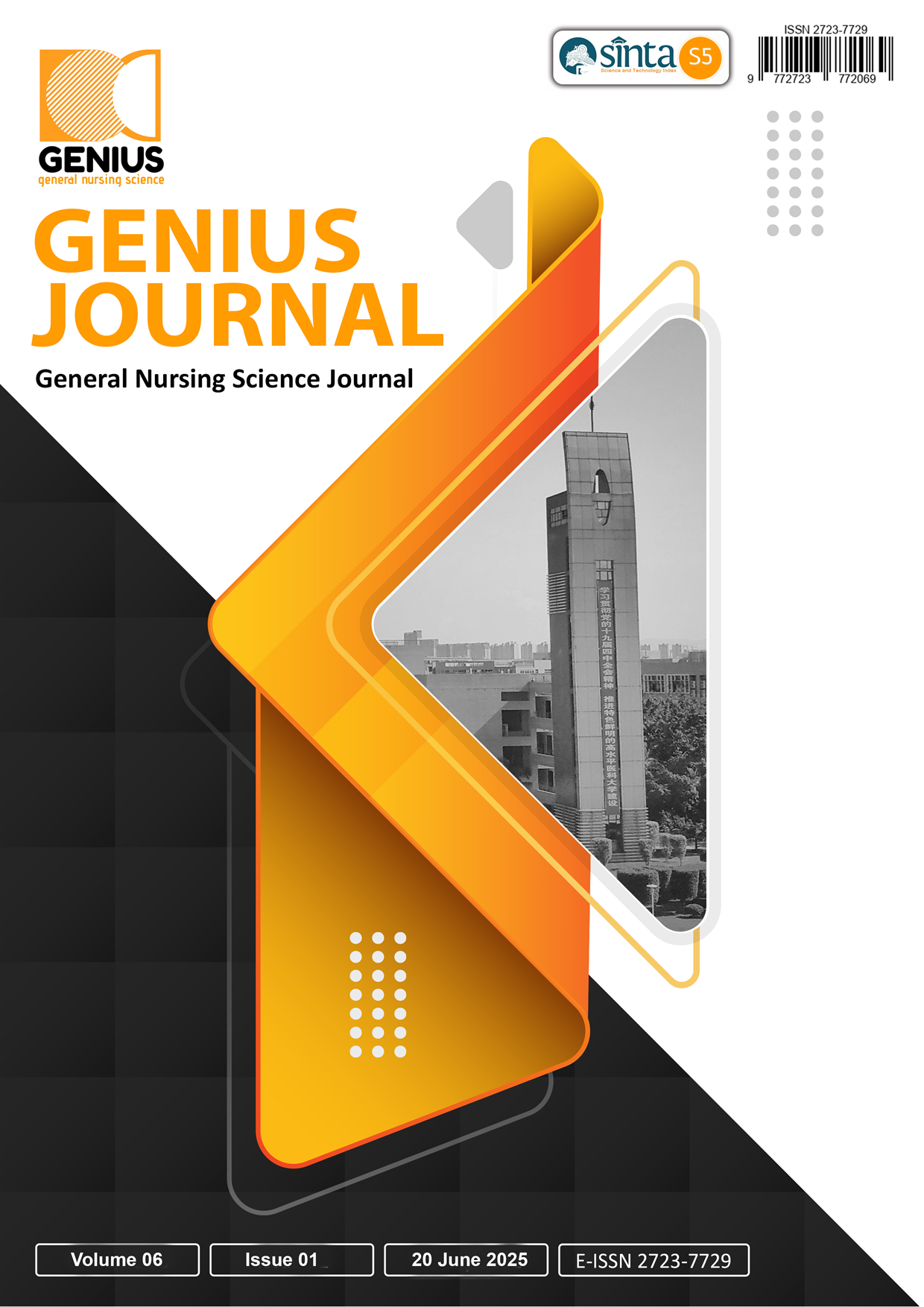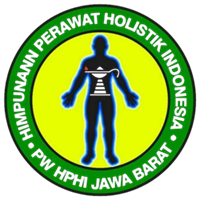Association Between Exclusive Breastfeeding and Maternal Knowledge of Toddler Nutrition with Wasting Incidence in Toddlers
DOI:
https://doi.org/10.56359/gj.v6i1.477Keywords:
Exclusive Breastfeeding, Toddlers, Mother's Knowledge, WastingAbstract
Introduction: Wasting is an acute nutritional disorder in toddlers that can lead to impaired growth and increased morbidity. Exclusive breastfeeding and maternal knowledge about toddler nutrition are key factors influencing nutritional status. This study aims to examine the association between exclusive breastfeeding and maternal knowledge of nutrition with the incidence of wasting among toddlers in the working area of Sidomulyo Health Center, Samarinda City.
Methods: This study employed a quantitative analytical method with a cross-sectional design. A total of 188 mothers and toddlers were sampled using stratified random sampling, and 168 toddlers met the inclusion criteria for analysis. Data were collected through structured questionnaires and anthropometric measurements. The Chi-Square test was used to analyze the association between variables, and odds ratios (OR) were calculated to determine risk levels.
Results: Among the 168 toddlers, 43 (25.6%) were identified as experiencing wasting. A significant association was found between exclusive breastfeeding and wasting incidence (p = 0.000; OR = 0.111; 95% CI = 0.049–0.255), indicating that children who were not exclusively breastfed had a higher risk of wasting. Maternal knowledge of toddler nutrition also showed a significant relationship with wasting (p = 0.000), where poor maternal knowledge was associated with a higher incidence of wasting.
Conclusion: Exclusive breastfeeding and good maternal knowledge about toddler nutrition are protective factors against wasting. Health promotion strategies at the community health center level should prioritize increasing awareness and education regarding exclusive breastfeeding and toddler nutritional needs to reduce the prevalence of wasting.
Downloads
References
Afni Zakiah Nst, R., Maya, S., Ernalia Nutrition Study Program, Y., Sultan Syarif Kasim Riau, U., Jl Soebrantas No Km, IH, Baru, S., & Pekanbaru, K. (2024). The Relationship Between Mother's Nutrition Knowledge, Energy and Protein Intake and the Incidence of Wasting in Toddlers in Pasar Sibuhuan Village. In National Seminar on the Integration of Agriculture and Animal Husbandry (Vol. 2, Issue 1). https://semnasfpp.uin-suska.ac.id/index.php/snipp
Alia Rahma, F., Munir, M., Faridatul Fauziah, L., Bachelor of Nutrition Studies, P., Health, F., Nahdlatul Ulama Health Sciences Tuban, I., Bachelor of Health Administration Studies, P., & Nahdlatul Health Sciences, I. (2024). INSOLOGI: Journal of Science and Technology The Relationship between Exclusive Breastfeeding, Completeness of Basic Immunization and Infectious Diseases in Toddlers Aged 1-5 Years with Wasting Incidents in Tuban Regency. Print Media, 3(2), 215–225. https://doi.org/10.55123/insologi.v3i2.343
Anggerayani, E., Afrika, E., Midwifery and Nursing, F., Kader Bangsa, U., & Kemenkes Palembang, P. (2023). Factors related to wasting in toddlers at the Awal Terusan Health Center, SP Padang District, Ogan Komering Ilir Regency in 2023. https://stikes-nhm.e-journal.id/OBJ/index
Anwar, R., Gizi and Dietetics, T., Gizi, J., & Kemenkes Banjarmasin, P. (2024). The relationship between maternal knowledge, parenting patterns and environmental sanitation with the incidence of wasting in toddlers. Journal of Food and Nutrition Research, 6(1), 48–56.
Dhonna Anggreni., M. Kes. (2022). Textbook of Health Research Methodology (SKM., Mk. Eka Diah Kartiningrum, Ed.). STIKes Majapahit Mojokertp.
Djaali, H. (2020). Quantitative research methodology. Jakarta: PT Bumi Aksara.
ENGGAR ANGGRAENI, SST., M.Gizi, Mirthasari Palupi, SST., M.Kes, Risma Trisnagati, A.Md.Gz, Fitria Nur 'Aini Indahsari, AMG • 2023. (2023). Nutrition and Acupressure. UwaisInspirasiIndonesia.https://www.google.co.id/books/edition/Gizi_Dan_Akupresur/Nog3eaaaqbaj?hl=id&gbpv=1
Erika, E., Sari, Y., & Hajrah, WO (2020). Wasting Incident in Toddlers Aged 6-59 Months. Smart Midwife Journal, 2(3), 154–162. https://doi.org/10.33860/jbc.v2i3.110
Fuada, N., Salimar, S., & Setyawati, B. (2023). Characteristics of acute and chronic nutritional status of toddlers. CV. Prosperous Young Feniks.
Fentia, L. (2020). Risk factors for malnutrition in children aged 1-5 years from poor families. NEM Publisher
Hidayat, AA (2021). Developing research instruments & validity-reliability tests. Surabaya: Health Books Publishing.
Hidayat, AA (2021). Practical ways of statistical testing with SPSS. Health Books Publishing.
Hidayat, AA (2023). Recognizing the problems of obesity and malnutrition (2nd Edition). Suluah Kato Khatulistiwa.
Jannah, M. (2023). Nutritional status of toddlers: Its relationship with employee knowledge, attitudes and actions. CV DOTPLUS Publisher.
Kurniawan, W., & Agustini, A. (2021). Health and nursing research methodology. Cirebon: CV. RUMAH PUSTAKA.
Latifah, N., Pujiastuti, SE, & Sudirman. (2023). Potential of purple sweet potato brownies on malnutrition status in toddlers. Chakra Brahmana Lentera Institute.
Noflidaputri, R., Reni, G., Sari, M., Kesehatan, F., Fort, U., & Kock Bukittinggi, D. (2022). Determinant Factors Causing Wasting Incidents in the Muara Labuh Health Center Work Area, South Solok Regency. In Human Care Journal (Vol. 7, Issue 2).
Nova, M., & Misdhal Rini, A. (2024). Relationship between maternal knowledge level, parenting patterns, nutritional intake and nutritional status (BW/H) in toddlers aged 24-59 months in the working area of the Padang City Anak Air Health Center. Encyclopedia, 6(2), 312–319. http://jurnal.ensiklopediaku.org
Noviana Sari, E. (2022). Factors Affecting the Incidence of Wasting among Children Under Five Years of Age. 10(1).
Nurhidayati, SS, Herrywati Tambunan, S. Tr. Keb., M. KM, Siti Saleha, S. ST., M. Keb, Fatiyani, S. Pd., M. Kes, & Isniwati, M. Pd. (2023). Exclusive breastfeeding and lactation rooms: Fulfilling every child's right to receive the benefits of breastfeeding from an early age. Selat Media Partners
Nur Aisya Aurellia, AA (2021). Determinants of Wasting Incidence in Toddlers. STIS Statistics Polytechnic.
Pehe, Y., Leani Muskananfola, I., & Goa, MY (2022). Care of Wasting Toddlers at Oepoi Health Center, Kupang City. CHMK Nursing Scientific Journal, 6(1), 41–50.
Purwadi, H.N., Nurrika, D., Wulandari, M., Novrinda, H., & Febriyanti, H. (2023). Determinants of Wasted Among Age 6-59 Months: The Indonesia Family Life Survey 2014. Amerta Nutrition, 7(1SP), 17–24. https://doi.org/10.20473/amnt.v7i1SP.2023.17-24.
Rohayati, YI, & Susi, H. (2022). Monograph on nutritional status and development of children aged 0-24 months in Sri Kamulyan and Sukaluyu Villages, Karawang Regency. NEM Publisher.
Saleh, C., Petrus, & Ahmad. (2022). Risk Factors for Wasting in Toddlers Aged 7-24 Months in the Work Area of the Wolo Health Center UPTD, Kolaka Regency. Scientific Nutrition Journal, 9(2), 36–44.
Sari, EN (2022). Factors Affecting the Incidence of Wasting among Children Under Five Years of Age. Journal of Health Polytechnic of the Ministry of Health of the Republic of Indonesia Pangkalpinang, 10(1), 75–82.
Sari, EM, & Pansori, Hartian, R. (2023). Factors Influencing the Incidence of Wasting in Toddlers in the Work Area of Tanjung Kemuning Health Center, Kaur Regency in 2023. Journal, 198–205.
Sari, FA, & Putri, DS (2020). The Relationship between Knowledge and Attitude of Mothers of Toddlers Regarding Providing Additional Foods with the Incidence of Toddlers at Risk of Wasting at the Getasbari Village Integrated Health Post. Journal of Nursing Profession, 8(1), 82–92.
Septi Oktavia Br Aritonang, TPWL (2022). Risk Factors for Wasting in Toddlers at the UPTD Luahagundre Maniamolo Health Center, South Nias Regency in 2019. Journal of Health Technology and Medicine, 8.
Sitoayu, L., Imelda, H., Purwara Dewanti, L., & Wahyuni, Y. (2021). The Relationship Between Infant and Child Feeding History (Pmba) and Infectious Diseases with Malnutrition Status (Wasting) in Toddlers Aged 6-24 Months at the Poris Plawad Health Center. In Jurnal Sains Kesehatan (Vol. 28, Issue 2).
Tonasih, SST., M.Kes., Ike Putri Setyatama, S.ST., M.Kes., Henny Sulistyawati, SST., M.Kes., Siswati, S.SiT., Bdn., M.Kes., Amanda Via Maulinda, S.Tr.Keb., MKM, Dewi Ari Sasanti, S.ST., M.Kes., Riska Susanti Pasaribu, SST., MKM., Ayesha Hendriana Ngest, MK • 2024. (2024). Textbook for Babies, Toddlers and Preschool Children. Masterpiece of Citra Utama Group. https://www.google.co.id/books/edition/Buku_Ajar_Bayi_Balita_dan_Anak_Prasekola/rE8SEQAAQBAJ?hl=id&gbpv=0
UNICEF. (2021). The Crisis Of Children's Diets In Early Life 2021 Child Nutrition Report. www.unicef.org
UNICEF Indonesia. (2023). In addition to stunting, wasting is also a form of child nutrition problem that needs to be watched out for.
WHO. (2023). Levels And Trends In Child Malnutrition.
Widiana, IW, Gading, IK, Tegeh, IM, & Antara, PA (2020). Validation of the preparation of educational research instruments. Depok: PT RajaGrafindo Persada.
Yuniati Laia, ZNA (2023a). Analysis of Risk Factors for Malnutrition in Toddlers at the Tanjung Sari Sub-Health Center. Journal of Health and Physiotherapy (Jurnal KeFis), 3.
Yuniati Laia, ZNA (2023b). Analysis of Risk Factors for Malnutrition in Toddlers at the Tanjung Sari Sub-Health Center. Journal of Health and Physiotherapy (Jurnal KeFis), 3.
Zakiah, R. (2023). The Relationship between Maternal Nutrition Knowledge, Energy and Protein Intake and the Incidence of Wasting in Toddlers in Pasar Sibuhuan Village. 2(1), 96–104.
Downloads
Published
How to Cite
Issue
Section
License
Copyright (c) 2025 Insani Tiara Tirta, Fatma Zulaikha, Ni Wayan Wiwin Asthiningsih

This work is licensed under a Creative Commons Attribution 4.0 International License.




















